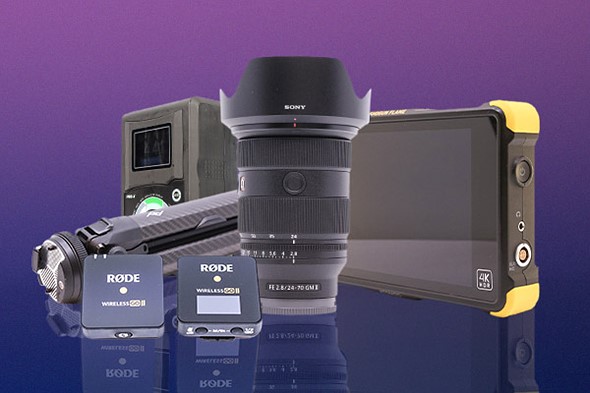
 |
| Photo: MPB |
Let’s face it, sometimes upgrading your gear is the quickest way to advance your photography and videography. Capturing the decisive moment can require abilities your current camera just doesn’t have. But fear not: experimenting doesn’t need to break the bank.
That’s where MPB comes in. The platform is world-famous for its gigantic selection of used photo and video gear, all individually inspected and photographed, and priced fairly. When you consider an upgrade to better gear, also consider trading in your old kit to save even more money. And, with a 14-day return policy, if your upgrade isn’t working out, you can get a full refund.
Speaking of upgrades, here are five to consider.
Upgrade 1: Move to a faster lens
 |
| Photo: MPB |
Nothing is more frustrating than trying to snag a low-light shot and failing. High ISOs and stabilization aside, the ticket to better photographs in tricky conditions is a faster lens.
Thankfully, many lens makers have options for upgrades with a bigger aperture. If you have, say, Sony’s 24-70mm F4 lens, there’s an F2.8 option you could consider. Maybe you have Panasonic’s inexpensive 25mm F1.7 and want a little more background blur. Try something like the Leica-branded 25mm F1.4.
Upgrade 2: Make your camera last longer
 |
| Photo: MPB |
Intensive shooting comes with a need for reliable power. Whether you’re outside waiting for wildlife to run by in the cold, or spending all day rolling video at an event, your camera’s battery life will come into play.
Some higher-end mirrorless models let you add a secondary battery with a custom-fit battery grip that functionally double your runtime. Pro videographers know that if you can screw it down to rigging, you’re golden. This is why versatile V-mount batteries like the Core SWX Hypercore are indispensable. V-mount batteries have a wide array of compatible adapters and mounts for video use no matter what kind of camera you have.
Upgrade 3: Get a dedicated microphone
 |
| Photo: MPB |
“My camera’s built-in microphone sounds amazing!” – said no one ever. Even video-centric cameras tend to have pretty thin-sounding onboard mics. And forget about getting clear voices for vlogs, or documentary filmmaking.
Even an inexpensive shotgun mic can make a world of difference to the audio quality of your videos, making the classic, tried-and-true Rode VideoMic Pro+ a no-brainer. And if you need lavaliers that can help your subjects’ voices really pop, a secondhand set of Rode’s Wireless Go II should serve you well.
Upgrade 4: Switch to a carbon fiber tripod
 |
| Photo: MPB |
When it comes to working outdoors, every gram counts. After all, if you’re hauling gear into the backcountry to capture a shot of the landscape or Milky Way, picking the wrong gear could just about break your back. Ditch the aluminum tripod and go for a compact, lightweight carbon fiber model, instead.
Take, for instance, the high-tech, compact Peak Design Travel Tripod. The aluminum version weighs in at 1.56 kg (3.44 lbs), while the carbon one is only 1.27 kg (2.81 lbs). That difference means you can comfortably carry more gear without skimping on other essentials, like coffee or trail mix.
Upgrade 5: Capture cinematic video with an external HDMI recorder
 |
| Photo: MPB |
If you’re experimenting with color grading your own footage, 8-bit 4:2:0 with a standard flat profile can be extremely limiting. Unfortunately, some cameras otherwise capable of rich images are limited to the depth of file they can record internally.
Of course, there’s a way around this internal recording limitation: external recording! Something like the Atomos Shogun Flame 4K would be a fantastic way to upgrade your mirrorless camera to one that can get a cinematic look. This older recorder can spit out 4K 60P 10-bit ProRes footage onto SATA solid-state drives with added goodies like HDR. Plus, it gives you a far bigger screen than whatever’s on the back of your camera.






